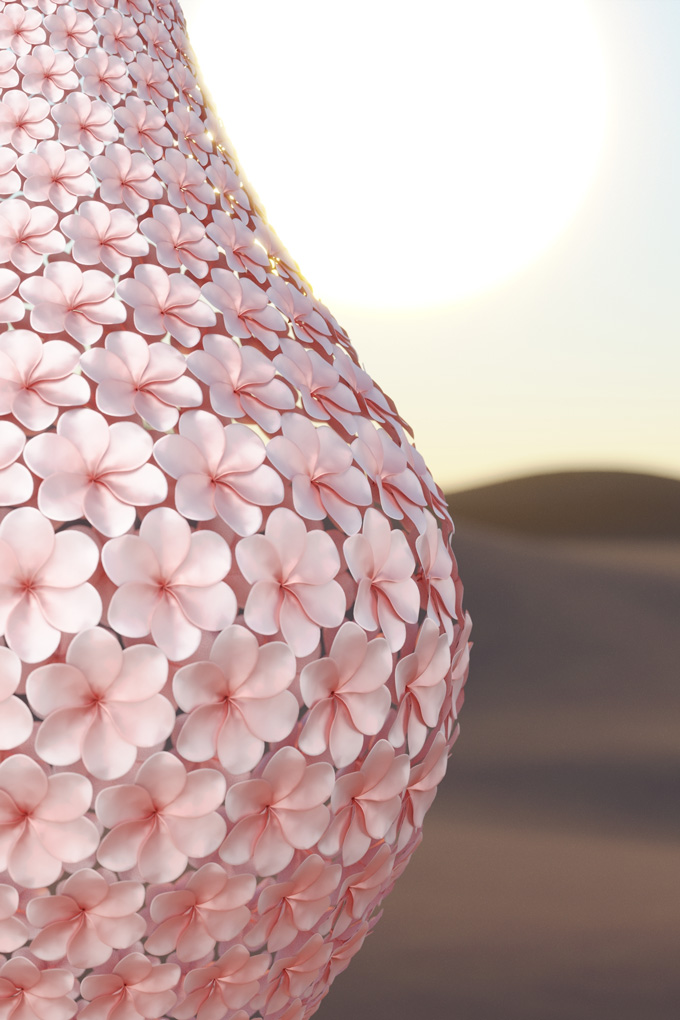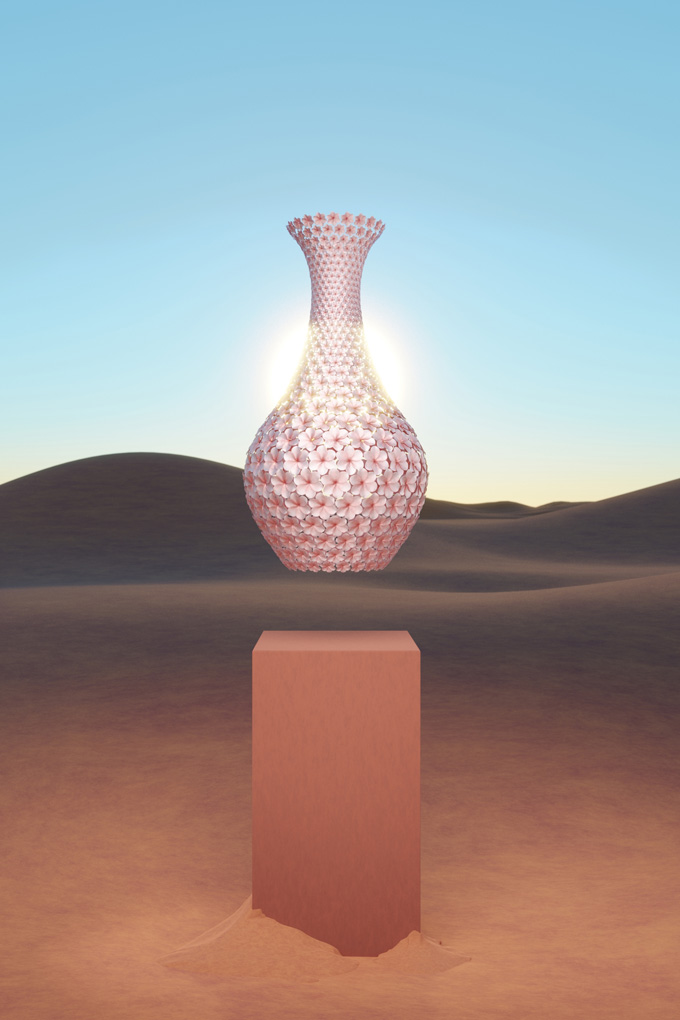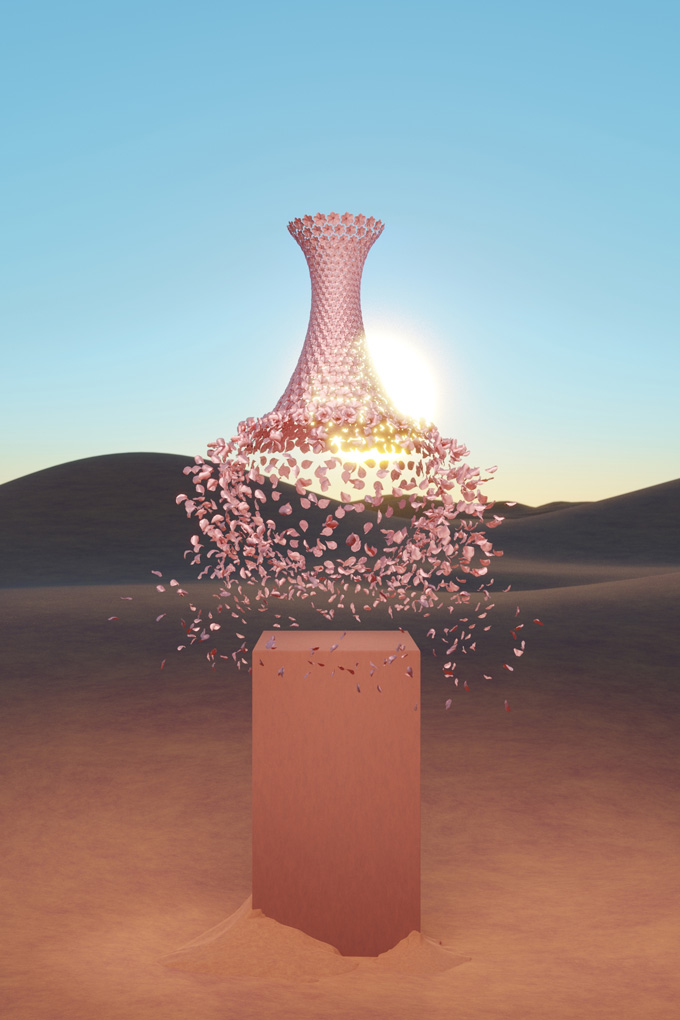“We aren’t artists,” Hunn Wai says emphatically to me over Zoom. In the digital square next to him, his long-time professional partner Francesca Lanzavecchia nods in agreement. Noticing my confusion at his declaration—since this column is after all, titled Artist-in-Residence—Wai elaborates, “Artists try to capture their way of seeing the world, but as designers, we cater to how our target audience sees and experiences reality.”
This sense of inclusivity and altruism characterises the works of Lanzavecchia + Wai, an eponymous industrial design studio started in 2010 that have designed for brands like Zanotta, FIAM and Living Divani. However, the duo behind the label met much further back in 2006, when both were studying for their Masters in Design at the Design Academy in Eindhoven, the Netherlands. He is London-born and Singapore-bred while she hails from Pavia, Italy. But although they grew up separated by over 10,000 kilometres, they were able to seamlessly weave their respective cultural influences into a common design philosophy, bolstered by their mutual appreciation for new technologies as well as the collusion of contrasting forms and materials.
Both their shared design loves come to life in Lanzavecchia + Wai’s creation for Vogue Singapore: a digitally-rendered non-fungible token (NFT) of a vase made up of blooms, aptly named ‘Living Vase 01’. When the flowers fall off in a blush-pink whirlwind, there is almost no time to mourn the loss for the very next moment, the vase pieces itself back together as the petals unfurl in sync again. Unbounded by the rules of Mother Nature, the whole cycle repeats in hypnotising perpetuity as the blossoms’ manmade, blockchain-enabled beauty takes on a life of its own that lasts long after its creators do.
Although Lanzavecchia + Wai don’t consider themselves artists, in the vase’s precise curvature and the petals’ uniform perfection lie an artistry that transcends pixels and speaks to Man’s universal and timeless desire to innovate. “Design is telling a story about the world we know but in a new context,” explains Wai, “We get a thrill when we successfully distil a sophisticated concept into key points in a way that people don’t expect.” Lanzavecchia concurs, saying, “This piece is a journey, where we question things, weave together different disciplines, and try to understand as much as we can about our reality within time and resource constraints.”

Why did you choose flowers as the main subject for your NFT-based artwork for Vogue Singapore?
Francesca Lanzavecchia (FL): We decided to pick nature as our main muse because the topic of rebirth is a very important and meaningful inspiration to us. The blooming and wilting of flowers make us more aware of the passage of time as well as the knowledge that we are swept up in the flux of life. And so we decided to represent the tangible concept of nature using a more abstract form of nature—technology. Our digital rendering of flowers in a vase also represents rebirth because it is a loop that never stops playing: the viewer will see the flowers coming to life, dying, then brought back to life over and over again. It’s a never-ending cycle of new beginnings.
Hunn Wai (HW): The juxtaposition between digital technologies which we can control and uncontrollable Mother Nature is extremely intriguing. Software offers programmable parameters, but nature adheres to its own rules and logic. It felt a bit like we were playing God to make sure our flowers weren’t doing crazy stuff.
So the vase is a backdrop for the flowers?
HW: The vase does not have to be filled with anything for meaning; it is a meaningful artefact in itself because it captures the culture and technological status quo of the era it is created in. For instance, a Ming vase is a milestone in ceramic history: it represents the strides the Chinese made in ceramic technology and also the greater demand for beautiful homeware because the empire became more affluent. At the same time, China was also opening up to foreign trade then, so the reputation of Ming porcelain spread far and wide. Just a simple vase could serve as a snapshot of our times, and our digital vase reflects our modern cultural capital. And while a vase is a functional piece, it’s also a symbolic vessel: people buy vases not just to hold flowers, but to also show that they can appreciate beauty, and that they have the social and economic bandwidth to support this appreciation.

This is your company’s first NFT-based artwork. What attracted you to this technology?
FL: The infinite possibilities. We live in a world constrained by finite material resources, but those limits don’t exist in the digital world. So being able to dream of a project unbound by material rules and actually having a way to materialise said dream is extremely attractive.
HW: It also touches on how our society consumes. In the past, musicians used to sell music on cassette tapes and CDs—it’s always in a physical format. But these days, we consume and discover music through apps and algorithms. I think NFT represents another quantum shift in our consumption philosophy that’s reflective of our digital lifestyle. We are bionic, in a sense; we can’t live without devices, and this creation gives a formal recognition to the indispensable role of technologies in our life.
This is also a trigger for discourse that might be quite existentialist: does a digital rendering of a vase qualify as a vase? I think this can help to get people reflecting on wasteful consumption, because if everyone buys digital, it would be good for our earth.
“This piece is a journey, where we question things, weave together different disciplines, and try to understand as much as we can about our reality within time and resource constraints”
What were some challenges of using this technology?
FL: The infinite possibilities and having to settle on one was a challenge. We are used to creating designs that can come in multiple different finishings; for instance, a sofa could come in 10 different colours. But now, we have to really decide on what will be the final, ultimate version of our digital vase and flowers—it feels like a huge responsibility.
How did you work out any creative differences in choosing this final version?
HW: After a decade of working together, we have a lot of trust and respect for each other’s opinions. We both agree that even though art is subjective, what’s objective is that an artwork should always have justifiable value. We are always in organic dialogue about our motivations and inspirations, which helps to sharpen our project’s vision as we work on it.
FL: What we always aim to do is to tell stories. Our choice is never determined by aesthetic, but by the mood it conveys. So we put everything on the table and we come together to discuss what feelings we want our artwork to evoke.




Do you think NFTs are just a design fad or something that’s here to stay?
HW: I think NFTs is here to stay for good. There’s a lot of hype, as with anything that’s new and has fantastical sale numbers attached to it. And while it’s still early days, I do think the hype is justified because it helps to democratise how people can buy and exchange products they find interesting and meaningful. There’s a lot of potential and I think we’re just scratching the surface of what NFTs can offer to us over our lifespan.
FL: Another strength of NFTs is that it helps everyone keep track of all transactions attached to a product, which is something I think we’ve lost amid the sea of information in this internet era. I predict that the whole creative industry will embrace NFTs because it’s a way to safeguard intellectual property.
Will NFT art erode the value of physical art?
FL: Physical art like paintings is irreplaceable, but they will be complemented by NFTs in time to come. I think art will move increasingly towards a phygital nature where it comes in both physical and digital forms. When photography was created, they said the world of painting would die, but it didn’t. We just keep finding new ways of expressing ourselves and exploring our creativity. And who’s to say we won’t one day have immersive gloves that can let us interact with NFT art in virtual or augmented reality? Those things aren’t unimaginable these days!
Purchase the NFTs: Own a part of fashion and art history
The September issue of Vogue Singapore is a special NFT issue that explores the new creative renaissance born out of technology.
The ‘Living Vase 01’ artwork by Lanzavecchia + Wai will be available for purchase as an NFT. It forms part of the Vogue Singapore September NFT collection, which will be available for auction on the Binance NFT marketplace starting from 20 September at 8PM SGT till 25 September 8PM SGT.
The auction is in collaboration with Brytehall—a premium NFT platform developed by Media Publishares in partnership with VIDY and Binance, the world’s largest cryptocurrency exchange.
Enter the metaverse: Visit the Vogue Singapore ‘New Beginnings’ microsite
Vogue NFT Covers: Discover the two digital-only September covers for Vogue Singapore inspired by the global theme of ‘New Beginnings’
Beauty NFTs: See the surreal artwork created for Vogue Singapore by make-up artist Dain Yoon
Fashion NFTs: Explore the ‘flame dress’ designed exclusively for Vogue Singapore by Olivier Rousteing from Balmain





